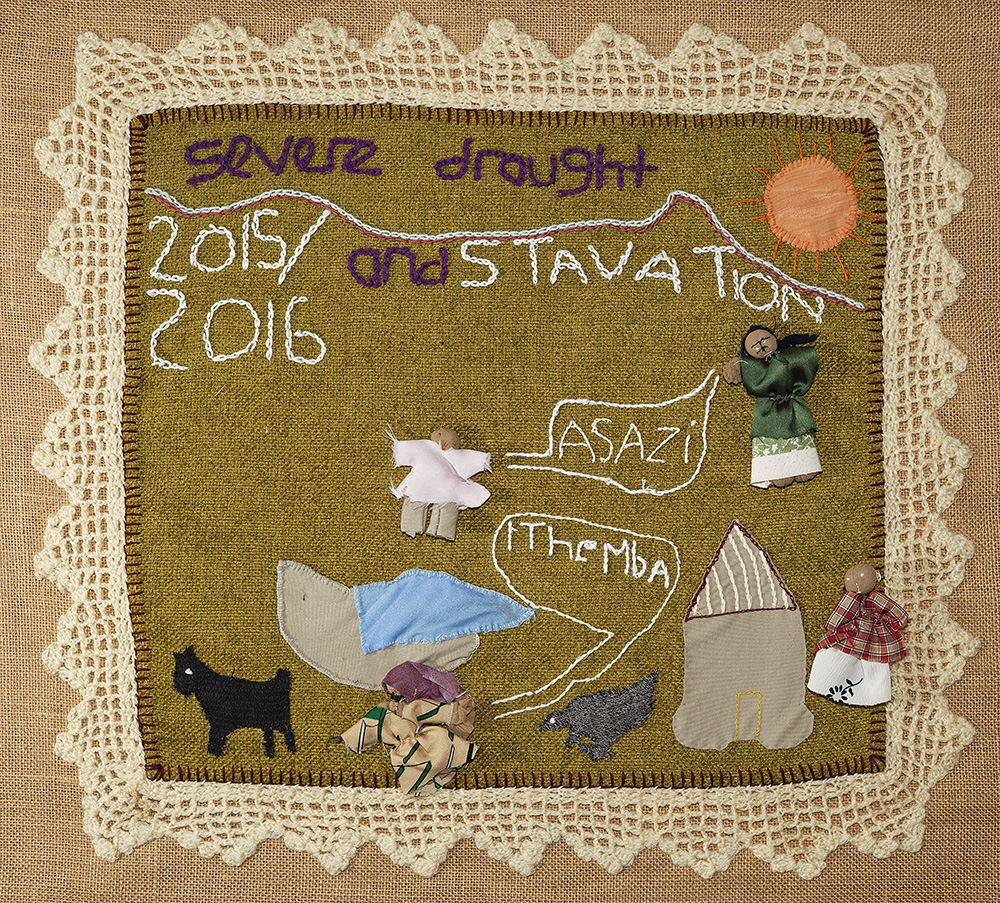Wednesday, 31 December 2025
Textile
Details

'2016 Starvation in Zimbabwe', by Lakheli Nyanthi. (Photo: Martin Melaugh)
|
| Title of Textile: | 2016 Starvation in Zimbabwe |
| Maker: | Lakheli Nyanthi |
| Country of Origin: | Zimbabwe |
| Year Produced: | 2016 |
| Size (cm): | 56cm (w) x 49cm (l) |
| Materials: | Cotton and wool |
| Type of Textile: | Arpillera |
| Description: | In February 2016 the Zimbabwean Government declared a state of emergency in response to a prolonged drought. Stemming from El Niño - a cyclical weather pattern of warming in the central and eastern tropical Pacific, more severe than usual – this drought resulted in crop failure, food shortages and severe hardship for people already living a precarious existence.
In this arpillera, Lakheli gives us a window into the severity of the situation in her local area. The words “Severe drought” and “Starvation” dominate the piece. She graphically explains the reality and sense of desperation: “In 2016, the rains failed and people in Zimbabwe are facing starvation in some rural areas. The textile shows hungry people and livestock, and a nearly empty dam. ‘Asazi’ means ‘what can we do?’ and 'iThemba' means 'hope'.”
In 2019, El-Nino induced poor rainfall, Cyclone Idai and economic uncertainty, gave no respite to these grim conditions. At the beginning of 2024 the sporadic rainfall, rising maize prices and food insecurity signify that conditions have not improved since Lakheli depicted the situation in her community in 2016. The Food and Agriculture Organisation of the UN project that nearly 3.5 million people will be acutely food insecure and in need of urgent assistance in early 2024.
|
| Owner: | Conflict Textiles collection |
| Location: | Conflict Textiles store |
| Original / Replica: | Original |
| Photographer: | Martin Melaugh |
| Provenance: | Enyandeni Peace Centre collection, donated by Shari Eppel 2025 (RB0825) |
|